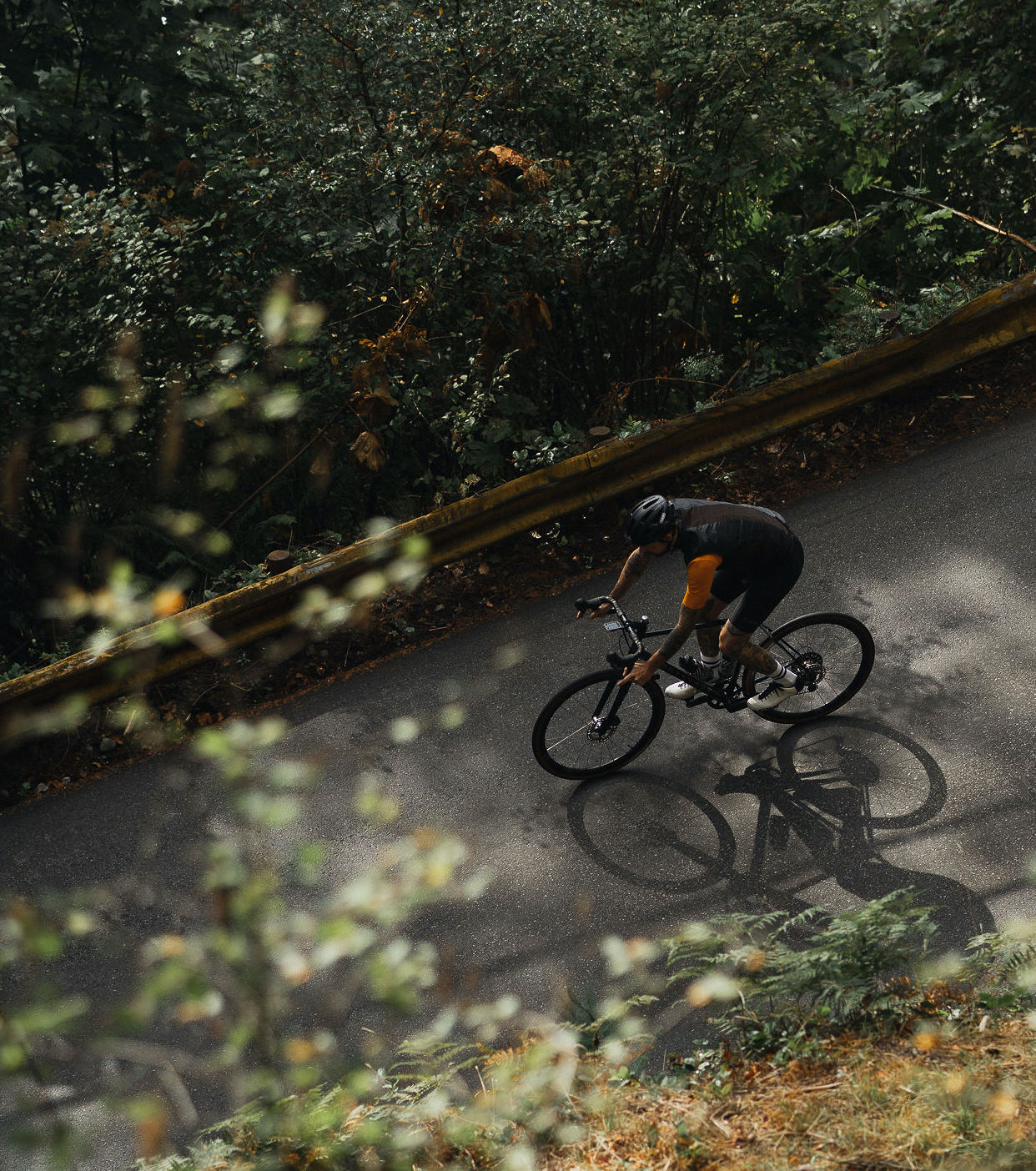As a cyclist, it may be tempting to give in to your need for speed when you’re in the zone. There’s something about the thrill of being on the road (or trail) with the wind in your… helmet.
But whether you’re a commuter, athlete, road, or mtb enthusiast, one thing is for sure: safety and security are paramount.

The next time you head out, consider these tips for maximum safety and bike security.
Do an M-Check on your bike.
An M-check is a must. This is where you assess all the main parts of your bike and ensure they’re in tiptop shape. It’s named after the pattern you follow when checking your bike. (Pretty cool, huh?) It’s quick and worth avoiding the hassle of a dodgy spoke or loose bearing. Check out Bike Radar and Red Bull’s helpful M-check guides.
Register your bike.
We’ve talked about this extensively over here. It can save you TONS of money and anxiety in case you experience bike theft and need to track your bike’s location. Bike tracking can discourage thieves from selling stolen bikes online since your bike’s enlisted into a database. And since the whole community is alerted to your bike’s specs, more people can help find your bike!
Download the 529 Garage smartphone app to enlist your bike for free into North America’s largest searchable database.
Invest in a proper bike lock.
Another worthy essential since the stolen bike epidemic is REAL. We recommend the high-quality U-lock, instead of a flimsy cable lock that’s very easy to break. A U-lock may not completely guarantee that your bike won’t get stolen but it definitely decreases the possibility.
Get bike insurance.
Do your research on the policy that works best for you. Whether you’re going on a short trip or travelling internationally, it pays to secure a policy that suits your needs. There are many flexible packages that can cater to your cycling life. Review for a quote at Bicycle Broker.
Always wear a helmet and reflective gear.
Not all provinces require this but did you know that head injuries are the leading cause of fatal bike accidents? Wearing your helmet can significantly reduce your risk of serious injury by 70 percent. And while you’re at it, don’t forget your reflective gear for those post-sunset rides!
Use your lights and install mirrors.
Not only is it required by law in most areas but installing front and rear lights can help you stay visible when it matters most: at night. According to Bike Safe, 31 percent of biking injuries from motor collisions occur between 6:00 pm and 6:00 am.
You’ll also want to increase your visibility as a rider by installing mirrors on your handlebars or helmet. Practice carefully looking over your shoulder as well without swerving.
Act like a car.
Bikers have the tendency to swerve and switch lanes which confuse both drivers and pedestrians. Riding your bike like a vehicle will help you avoid being unpredictable on the road.
Familiarize yourself with bike signals.
Communication is crucial to avoiding accidents, especially at intersections. Remember that drivers cannot predict your next move unless you give proper and clear hand signals.
Avoid distractions.
Distracted driving is one of the leading causes of car accidents. On a bike where you’re more vulnerable and exposed, it can be just as fatal. Make sure to store items like your phone, first-aid kit, and wallet in your bike storage compartment. Have a water bottle that is easily accessible and can be used with one hand.
Study your routes.
Always go for wide roads or streets with dedicated bike lanes. On the trail, familiarize yourself with your surroundings especially if you plan to speed things up. Look out for accident-prone areas which call for unexpected turns.
Have a patch and first-aid kit ready.
You wouldn’t want to get stranded in a remote or unsafe location right? A patch kit for your flat tire can help you avoid that. A first-aid kit on the other hand needs no explanation but should definitely be brought along for the ride at ALL TIMES. It wouldn’t help to get basic first aid training before you endeavour on some long or rough biking adventures
Always carry a cellphone, ID, and some cash.
Add these to your pre-ride checklist. Your cellphone will help in case you forget your patch kit or have an emergency. Downloading the free safety app from Flare and having your ID can help an emergency response team identify you if something were to happen. Cash can also save you from a myriad of troubles but also comes in handy when you find an awesome resto for your stopovers.
Learn about the most common accidents.
It pays to be informed. Check out some helpful statistics at the Canadian Automobile Association (CAA).
Ride with the flow, not against it.
Riding against the flow of traffic can make you liable for an accident if something happens. Stick to the rules and the law to keep yourself and everyone around you safe.
We hope these tips help you take action in ensuring everyone’s safety. Staying alert keeps you and the people around you alive. Remember to always take care, have fun and ride responsibly.


